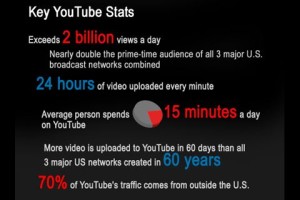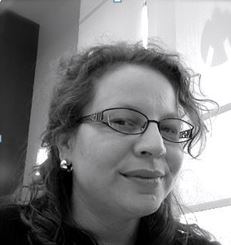Are you using videos in your classes? Would you like to learn more about how you can create and integrate YouTube videos into your teaching toolbox? Infographic courtesy of Viralblog provides a summation of the amount of time we spend on YouTube each day. Infographic courtesy of Viralblog provides a summation of the amount of time we spend on YouTube each day.
Leah Chuchran has spent a few minutes with me to share some information on why you should be integrating YouTube into your pedagogical toolbox. Continue on to learn more from her experience and perspectives.
YouTube has more videos and content than individuals have time. How do you think that this tool can be used for learning in the educational environment?
There are endless ways that video content can be used for learning in educational environments, including collaborative peer assignments, creation of formative assessments, digital storytelling projects and providing just-in-time tutorials as well as short instructional video content for the flipped classroom.
As the upcoming facilitator of the 4 hour workshop on YouTube, what do you think makes this a must attend workshop for Faculty?
Use of video is now a mainstay in nearly every educational environment. I believe that having basic knowledge of how to create, deliver and share video content is of utmost importance to create an engaging and interactive experience for learners of all ages. The tools and technologies that can be used are really at our fingertips!
What experience do you have using YouTube for educational purposes?
My position within the Center for Digital Scholarship allows me the freedom to explore and support faculty and grad students from a variety of disciplines. My colleagues and I have been instructing and guiding our audiences on the uses of YouTube and video content for many years, which up until the past few, has not been as simple. But even now you can use Blackboard to directly create a personalized video within a content area, host it within Youtube and share it with students. In addition, I currently facilitate the Foundations of Online Teaching course in which new-to-online faculty learn both theory and practice, which includes an introduction to open educational resources (OERs) and fits quite nicely with YouTube content including remixing and assessment of learning.
Do you believe that video can increase student engagement in the learning process?
Yes, I most certainly do. I see this quite often with my 9-year-old son who attends an online academy. A great deal of his lessons are video content. In addition, take a look at this infographic that explores the possibilities and the Impact of Video in Education.
What does research say about creating and reusing materials in a course?
We all know that time is a virtue and of the essence, especially to those in education. Many of us really just want more time to create, to share and to engage with our learners. There are two critical components in managing time and workload in our classes. The first is the creation of “learning objects” that can assist us in delivering information that is valuable and saves everyone time. The second is the identification of learning resources (most often referred to as open educational resources or OERs) that are created by another expert in which the content can be reused, remixed and delivered in the classroom. One of my go-to resources for effective time management practices, Effective Workload Management Strategies for the Online Environment, states the following about existing learning resources. Incorporating existing learning materials requires time and thoroughness at the course development stage but when materials are archived (with proper permissions system in place), the long-term benefits are worth the initial investment. Faculty workload can be substantially reduced by using existing materials since development time is reduced (Ragan & Terheggen, 2003).
What can participants expect when they join the workshop?
This 4-hour synchronous workshop will provide participants the opportunity to explore a variety of easy video creation and editing technologies so that they can apply what they’re learning to some of their own already made educational content. In addition, there will be an introduction to annotations and captioning for videos, as well as ways to use videos for formative assessment purposes. Finally, participants will receive real-time technical support as well as immediate feedback from other participants, which makes for a supportive learning community.
How hard is it to create personal content?
It’s actually quite easy to create personal content using technologies with a low learning curve! One of the simplest ways to get going is to use your already existing PPT slide deck, add a voice narrative using a screencasting tool, such as Screencast-o-matic, upload into YouTube and either share as a URL or embed into a webpage or Learning Management System (LMS). You can also use video files that you’ve captured on your mobile device or tablet or add directly from a webcam.
Do you have any strategies that you can share with us on how you locate quality content to use in your lessons?
There is no doubt that searching for content does take time. YouTube offers advanced search options to begin to filter out specific videos for disciplines. In addition, I do reference MERLOT quite a bit. MERLOT provides a platform that allows individuals to review the content, which can be helpful.
Leah Chuchran, MS, is the Digital Learning Specialist at the Emory Center for Digital Scholarship. She has been involved in higher education for nearly 10 years, integrating areas of online instruction, faculty enrichment initiatives, active learning best practices, instructional design, assessment and evaluation, particularly with technology-enhanced models. Leah holds an MS in Organizational Management from Chadron State College, a graduate certificate in Instructional Technology from San Diego State University and her BS in Information Systems from the University of Phoenix.
Her current research interests include open educational resources (OERs), open badges, building (and sustaining) learning communities, and “humanizing” the online classroom.
Register today – space is limited for this event.
To Register Click Here: YouTube for Learning on September 16th from Noon – 4pm ET



